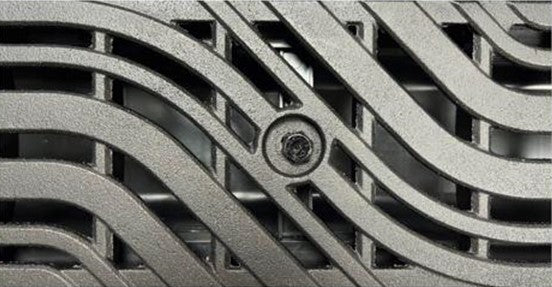What is Underground Drainage?
Underground drainage pipes are essential for managing water flow below ground level, preventing flooding, soil erosion, and damage to foundations and structures. These pipes direct water away from areas prone to accumulation, ensuring a stable and safe environment for both residential and commercial properties. Underground drainage systems often incorporate various components, such as channel drains, drainage grates, sump pumps, and inspection chambers, to efficiently manage water flow and maintain the integrity of the infrastructure.
Composition and Installation:
Underground drainage pipes are typically made from durable materials like PVC, concrete, or clay, designed to withstand the pressures and conditions of being buried underground. These systems often include geotextile drainage fabric or drainage fabric to prevent soil and debris from clogging the pipes. The installation process involves laying the pipes in a pre-designed layout, connecting them using drainage pipe connectors and drainage fittings, and ensuring they are properly aligned and secured to prevent leaks or blockages. The use of high-quality materials and connectors ensures a long-lasting and effective drainage solution.
Prepare Your Trench: Excavate the trench according to British Standards and Building Regulations, ensuring the dimensions and depth meet the necessary requirements for effective drainage.
Create a Pipe Bed: Add a layer of pea shingle to the bottom of the trench. This will form the bed for the drainage pipes, providing a stable and supportive base.
Plan Component Placement: Lay out the major components of your drainage system in the trench to ensure proper fitting and alignment. This will help you visualize the layout and make adjustments before final installation.
Cut and Chamfer the Pipe: Measure and cut the drainage pipes to the required lengths. Chamfer the ends at a 45-degree angle to facilitate smooth connections.
Assemble and Seal: Connect the pipes and fittings using a silicone lubricant to ensure a tight and secure seal. This step is crucial for preventing leaks and ensuring the longevity of the drainage system.
Backfill with Pea Shingle: Once the pipes are in place, backfill the trench with pea shingle up to the crown of the pipe. This provides additional support and helps with drainage.
Cover with Soil: Finish by filling the rest of the trench with the excavated soil, making sure to compact it adequately to prevent future settling and to maintain the integrity of the installation.
How to Maintain Underground Drainage?
Regular Inspections: Conduct periodic inspections of your underground drainage system, especially after heavy rainfall. Look for signs of blockages, leaks, or damage to ensure the system is functioning properly.
Clear Blockages: Remove any debris, silt, or roots that may have accumulated in the drainage pipes. Use drain rods, high-pressure water jets, or mechanical augers to clear blockages and restore proper flow.
Check Drainage Grates: Inspect and clean drainage grates regularly. Ensure they are free from leaves, dirt, and other debris that could obstruct water flow. Replace any damaged grates promptly.
Maintain Channel Drains: Keep channel drains clear of obstructions by regularly removing any build-up of debris. This helps to prevent blockages and maintain efficient water flow.
Inspect Sump Pumps: If your system includes sump pumps, check them periodically to ensure they are working correctly. Clean the pump and the sump pit, and test the pump to make sure it activates and deactivates properly.
Examine Inspection Chambers: Open and inspect inspection chambers to check for any signs of blockages or damage. Remove any debris and ensure that all connections are secure and functioning correctly.
Maintain Drainage Fabric: For systems utilizing drainage fabric, such as geotextile drainage fabric, inspect it for signs of wear or displacement. Replace or reposition the fabric as needed to ensure it continues to protect the drainage pipes from soil and debris intrusion.
Check Drainage Fittings and Connectors: Regularly examine all drainage fittings and pipe connectors for signs of wear, leaks, or damage. Replace any faulty components to maintain the integrity of the drainage system.
Flush the System: Periodically flush the entire drainage system with clean water to remove any accumulated sediment or debris. This helps to maintain optimal flow and prevents blockages.
Monitor Surrounding Areas: Keep an eye on the surrounding landscape for signs of water pooling or slow drainage. Address any issues promptly to prevent damage to the drainage system and the surrounding property.
By following these maintenance steps, you can ensure that your underground drainage system remains efficient, reliable, and long-lasting. Regular upkeep will help prevent costly repairs and maintain the overall health of your drainage infrastructure.
Why Choose Underground Drainage Systems?

Efficient Water Management: Underground drainage systems are crucial for efficiently managing and directing water flow, preventing potential damage to structures and landscapes.
Durability: Made from robust materials, these systems are designed to last, providing reliable performance under various weather conditions and pressures.
Versatility: With components like channel drains and drainage grates, underground drainage systems can be tailored to fit different requirements, from residential properties to large commercial sites.
Ease of Maintenance: Regular inspections using inspection chambers and the use of sump pumps ensure the system remains functional and effective, reducing the need for extensive repairs.
Environmental Protection: Properly installed underground drainage systems help prevent soil erosion and waterlogging, contributing to environmental conservation and sustainable land use.
Enhancing Your Drainage System:
To further enhance the effectiveness of an underground drainage system, consider incorporating the following:
Channel Drains: Ideal for managing surface water and directing it into the underground drainage system.
Drainage Grates: Prevent large debris from entering the drainage system, reducing the risk of blockages.
Sump Pumps: Essential for areas prone to water accumulation, helping to pump excess water away from vulnerable areas.
Geotextile Drainage Fabric: Used to filter out debris and prevent soil from clogging the drainage pipes, ensuring smooth water flow.
By understanding the components and benefits of underground drainage systems, you can make informed decisions to protect your property and maintain a safe and functional environment. Whether you're dealing with residential drainage or managing larger commercial projects, investing in a reliable underground drainage system is a crucial step towards effective water management and long-term infrastructure stability.
Choose Your Underground Drainage System with Drainage Supplies Direct
Drainage Supplies Direct is an expert retailer of underground drainage systems. Our expert team can advise on the best option to suit your needs, ensuring your drainage project is a success. We have a range of underground drainage products available to suit a huge variety of needs.
Are you looking for high-quality underground drainage? Email us at sales@drainagesuppliesdirect.co.uk, call us at 01752 466151, or order online 24 hours a day, seven days a week. We’ll be able to help you purchase your underground drainage now.

